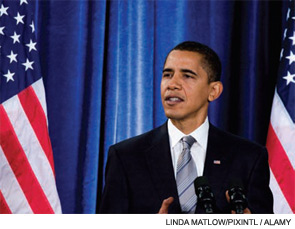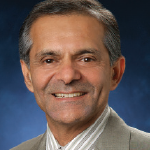Sixteen years after now Secretary of State Hillary Clinton spoke to the American Medical Association (AMA) House of Delegates on June 13, 1993, President Barack Obama delivered his message on health system reform on June 15, 2009. Clinton, who was the leader of the Presidential Task Force on Health Reform, arrived at the time her health plan was being formulated. The leadership of the AMA previously had been meeting regularly with Ira Magaziner, the point person for implementation of her plan. In this discussion, we tried to address improving access to healthcare for the uninsured and underinsured, and we thought our viewpoints were being heard. At the same time, we were stunned that the plan was not vetted more publicly with physicians and healthcare workers, and that Clinton portrayed organized medicine and physicians as responsible for the healthcare crisis. Language such as “price-gouging, cost-shifting, and conscionable profiteering” was used in her speeches.
We expressed great disappointment in Clinton’s criticisms on organized medicine. We thought we should have a seat at the table, but did not expect to be the main course. She reacted to our criticism by asking to address the AMA House of Delegates, which she did on June 13, 1993. She was greeted with respect and courtesy as she attempted to assuage the House of Delegates with remarks that recognized the contributions of physicians to the health of society and the need for us all to work together to achieve health reform.

Times have changed since 1993, and President Obama’s address to the AMA House of Delegates was preceded by a lockdown of the hotel area where he was to speak with explosive-sniffing dogs, picture IDs, metal detectors, and a large security force.
Although the president’s concepts were painted in broad strokes, his speech contained more details than he had previously discussed. President Obama also tried to reassure delegates and assuage their concerns. His speech addressed the following issues:
1. Professional liability reform: Although President Obama recognized the financial burdens imposed by the current system, his solutions were vaguely presented. Relief from liability will be offered to those who practice within guidelines, as if there was uniformity in a patient’s disease, rather than huge individual diversity. He was against a cap or ceiling on damage awards, ignoring the huge financial burden this places on the profession and the public.
2. The public option: President Obama attempted to reassure those who believe that the much-discussed “public option” is nothing more than a single-payer system. He stated that a public option is not a Trojan horse for a single-payer system. If everyone has health insurance, privately or via the public option, there will be no denials for pre-existing conditions, and hospitals will be paid for emergency care, which will no longer be a burden to the taxpayer. The delegates were skeptical that this would eventually evolve into a single-payer system with little input by physicians and concerns that there may be requirements for mandatory participation.
Ten days later, the Congressional Budget Office (CBO) scored the enormity of the cost for this option, which will not even provide universal coverage and may threaten to put private insurers out of business. The actual scoring of the cost is still controversial, and we do not know what the final plan will be like. The debate has continued to evolve, and the CBO’s figures have been disputed by, among others, Senator Max Baucus (D-MT). Some insurance companies believe they will not be able to compete with a public plan and have threatened that they may withdraw from the marketplace if such a plan is enacted.
3. Disparities in care and healthcare costs: Disparities in care and costs were a major theme of President Obama’s speech. All physicians and healthcare providers will have to address this issue, particularly when the data are released, shared, and analyzed.
4. Pre-existing conditions: President Obama’s advocacy of insurance coverage for pre-existing conditions for all brought a standing ovation. With passion, the President described his mother’s dilemma as she was dying of ovarian cancer and worrying whether she would lose her health insurance coverage. This is a universal concern that resonates with all of us. Those who are not insured are confronted with the precipice of being unable to afford healthcare, receiving inadequate treatment, and struggling with the specter of ultimate financial bankruptcy. This concept of community rating was a major tenet of AMA policy put forth to Clinton but opposed by the insurance companies; it is unclear how they would implement this process today.
5. Electronic health records: The president indicated enormous societal benefits that would ensue with the use of electronic health records. However, he did not discuss the lack of uniformity in electronic methodology standards, guidelines, the cost, the time required to implement them, the education that will be required, security of data, HIPPA concerns, the need for more technology overseers, and the hazards of an electrical outage or failure. Whether these benefits will truly justify the $19 billion that will prime the pump of a competitive adolescent industry is unclear.
6. Comparative effectiveness research: Comparative effectiveness research is necessary to address different treatment methods, some of which may not be effective. However, how this will be implemented, what it will cost, and who will decide what is effective was not addressed by President Obama in the speech.
7. Individual responsibility: Patients also have responsibilities. They must take better care of themselves by more healthy living: no smoking, regular exercise, good nutrition, appropriate rest, and drinking alcohol only in moderation to achieve optimal health. President Obama did not address healthcare literacy and comprehension, which many patients lack.
8. Physician workforce: President Obama stated that we need more primary care physicians. But how do we encourage this when there are so few incentives because of diminished reimbursement? The decline in primary care providers is well known; however, he offered no solutions as to how to increase the number of primary care physicians.
9. Medical education: We will need more physicians in the future to take care of the aging population. How can this be done when the debt burden of education and residency is so enormous? Many graduates today will only be able to service their debt rather than paying off the principal before some are forced to declare bankruptcy.
10. Sustainable growth rate (SGR): The President received a standing ovation when he addressed the SGR, the legislative Pandora’s Box that has resulted in inadequate reimbursement for medical services for many years and with limited updates that do not keep up with the costs of practice. This controversial reimbursement plan has been opposed by leading medical societies, including the ACR, and many healthcare economists. However, he offered no alternative to the SGR.
11. Medicare Payment Advisory Commission (MEDPAC): President Obama presented the idea that MEDPAC would be elevated to a higher federal level to address economic problems and reimbursement inequities. But do we really need another federal regulatory agency? Or do we need the ability to freely contract with the patient for professional services free of the encumbrances of third parties and government regulations?
12. Cost: The trillion-dollar cost for these programs would ostensibly be offset by universal coverage either through the private or public option. Funding for this ambitious plan would be achieved by eliminating billions of dollars out of the current system of reimbursement. However, this will only aggravate the already hard-pressed healthcare facilities, physicians, and other providers. The CBO stated that universal coverage still will not be achieved, in spite of this massive expenditure of money. Do we really need to burden our national debt further and still not achieve healthcare coverage for the uninsured and underinsured? Here is where we will have to await the final plans of the congressional committees before we know exactly what will be achieved.
The House of Delegates’ response was more enthusiastic to President Obama’s speech than to Clinton’s. The delegates appreciated the president’s visit and his attempt to address the issues. However, the overwhelming discussion after his visit was that the “devil is in the details,” which we may not know until the final plan is completed. Finally, the delegates recognize that the president’s rhetoric may exceed his ability to enact a plan. It will be Congress that will ultimately dispose or craft the plan that will finally arrive on his desk. At that time, the moment of truth for health system reform will have arrived.
Dr. Scalettar is clinical professor at George Washington University Medical Center in Washington, DC, and a member of the ACR Government Affairs Committee. He was chair of the Board of Trustees of the AMA in 1993 when Clinton spoke to the House of Delegates.

